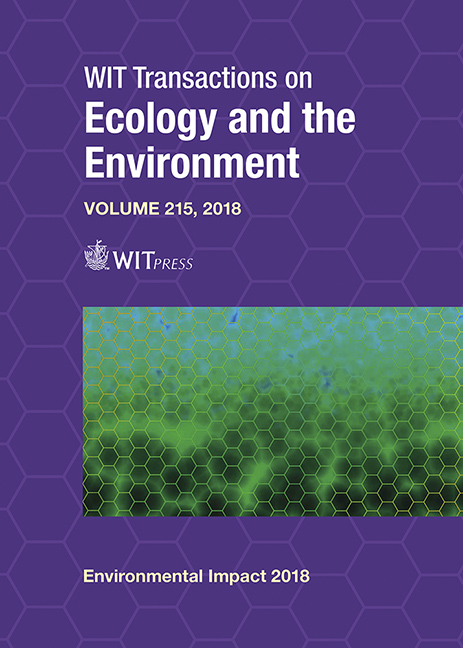ENVIRONMENTAL INDICATORS IN FOREST FRAGMENTS FROM URBAN WATERSHEDS
Price
Free (open access)
Transaction
Volume
215
Pages
12
Page Range
121 - 132
Published
2018
Paper DOI
10.2495/EID180111
Copyright
WIT Press
Author(s)
REGINA MÁRICIA LONGO, ALESSANDRA LEITE DA SILVA, SUELI DO CARMO BETTINE, ANTONIO CARLOS DEMAMBORO, ADRIANO BRESSANE, FELIPE HASHIMOTO FENGLER, ADMILSON ÍRIO RIBEIRO
Abstract
Accelerated urbanization in Brazil promoted the rapid growth of cities and, in most cases, was not based on adequate land use planning. The result was the intense fragmentation of the landscape, causing the destruction and fragmentation of forest habitats, which were restricted to small and isolated remnants. In this sense, the present study promoted an analysis of the environmental quality of vegetation fragments in the sub-basins of Ribeirão Anhumas, Campinas, São Paulo, Brazil by calculating and interpreting the circularity index (CI), in order to define the format of the fragments, connectivity/isolation and the use and occupation of the environment as well as area and location, in order to promote the diagnosis and identification of priority areas for the implementation of restoration and environmental management actions. It was identified, therefore, that the remaining vegetation of the upper, middle and lower sub-basins is divided between small and medium unconnected fragments of which 56.2% and 24.2% presented an elongated and moderately elongated shape, respectively, and, therefore, high susceptibility to external interference and edge effects. On the other hand, high urbanization evidenced mainly in the high-level limits forest management projects, since the fragments are surrounded by built areas.
Keywords
urbanization, remaining vegetation, environmental indicators





